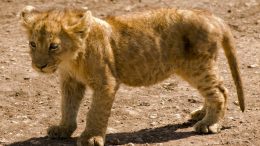Science doesn’t happen in a vacuum. Good science builds on what came before and enables the next wave of knowledge — and real-world applications — to be built on it.
But for that to happen, new discoveries first need to get out into the world. And that can be tough. A lot of new studies get promoted through university media departments and press releases, but far too many scientific papers on conservation and other important topics don’t enjoy that benefit and therefore don’t have the reach to influence discussion, policy, or behavior.
Let’s change that. Welcome to the first edition of “This Month in Conservation Science,” a semiregular column where we’ll bring you some of the latest scientific papers from around the world. Our priority will be on brand-new papers that haven’t gotten a press release, so our readers may discover something other people aren’t really talking about — yet.
We’ll also try to draw from journals that publish under an open access model, so that the papers we highlight are available to everyone rather than a select few. (We’ll include some that are behind subscription firewalls, though: That’s an unavoidable aspect of scientific publishing.)
The focus of this column will be on what’s new, but we’ll occasionally take a more thematic approach and look at recent and classic papers that, collectively, will help drive a broader understanding of a key area of conservation.
Here are more than a dozen papers that grabbed our attention in the past few weeks, covering an unusual predator of lions, a symbiotic crow, ecotourism land grabs, advice for students, disappearing wetlands, and a whole lot more:
-
- “A feathered past: Colonial influences on bird naming practices, and a new common name for Ardenna carneipes (Gould 1844)” (Ibis)
- “Assessing population viability and management strategies for species recovery of the critically endangered Puerto Rican parrot” (Animal Conservation)
- “Assessing the potential of species loss caused by deforestation in a mature subtropical broadleaf forest in central China” (Trees, Forests and People)
- “Comparing occupancy and activity metrics for assessing temporal trends in vulnerable bat populations” (Biological Conservation)
- “Conservation threats from tourism land grabs and greenwash” (Biological Conservation)
- “Current species protection does not serve its porpoise — Knowledge gaps on the impact of pressures on the Critically Endangered Baltic Proper harbour porpoise population, and future recommendations for its protection” (Ecology and Evolution)
- “The effect of habitat fragmentation on Malay tapir abundances in Thailand’s protected areas” (Global Ecology and Conservation)
- “Exploring the user experience, quality, and provision of urban greenspace: A mixed-method approach” (Urban Forestry & Urban Greening)
- “Is the general threatened status of four mammal groups affected by taxonomic changes over time?” (Journal for Nature Conservation)
- “Lost and found coastal wetlands: Lessons learned from mapping estuaries across the USA” (Biological Conservation)
- “Monitoring soil fauna with ecoacoustics” (Proceedings of the Royal Society B: Biological Sciences)
- “Observation of threatened pinyon jays Gymnorhinus cyanocephalus in the EU pet market as a potential additional threat” (European Journal of Wildlife Research)
- “Point of View: Teaching troubleshooting skills to graduate students” (eLife)
- “Predator becomes prey: Martial eagle predation of lion cubs in the greater Mara region, Kenya” (Ecology and Evolution)
- “Predicting conservation priority areas in Borneo for the critically endangered helmeted hornbill (Rhinoplax vigil)” (Global Ecology and Conservation)
- “Symbiosis between the Javan rhinoceros and slender-billed crow: A novel inferred cleaning mutualism” (Ecology and Evolution)
- “Systematic review of remote sensing technology for grassland biodiversity monitoring: Current status and challenges” (Global Ecology and Conservation)
We found these papers through a combination of email alerts, RSS feeds, newsletters, and other sources, but we’re happy to hear from any author or team who has a new journal paper coming out. For consideration in a future column, drop us a line at [email protected] and use the subject line TMICS.

Previously in The Revelator:
Busy Cheetahs, Critical Lions, Surging Tigers and Other Big Cat News


